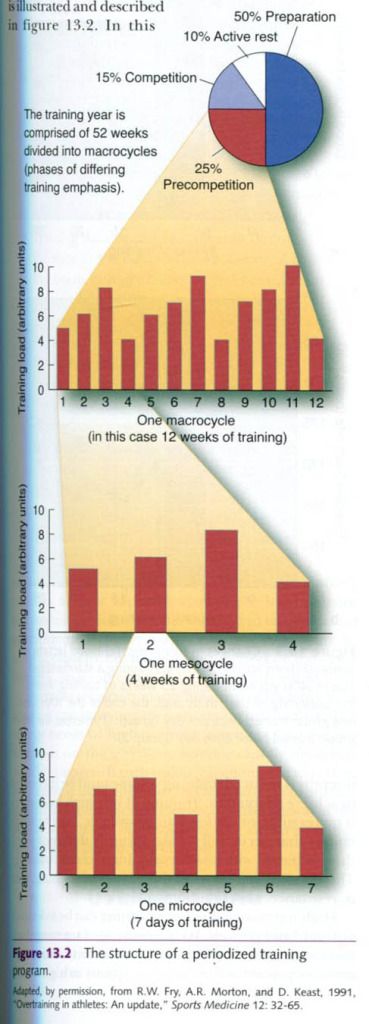Figure below provides a model demonstrating the
continuum of training stages that a competitive athlete might go through during
a full year.
This
model is based on the principle of periodization.
In this
model, undertraining represents the
type of training an athlete would undertake between competitive seasons or
during active rest. Generally, physiological adaptations will be minor, and
there will be no improvement in performance. Acute overload represents what might be considered an “average”
training load, whereby the athlete is stressing the body to the extent
necessary to improve both physiological function and performance. Overreaching is relatively new term
that refers to a brief period of heavy overload without adequate recovery, thus
exceeding the athlete’s adaptative capacity. There will be a brief performance
decrement, from several days to several weeks, but eventually performance will
improve. Finally, overtraining refers
to that point at which an athlete experiences physiological maladaptations and
chronic performance decrements. This generally leads to the overtraining syndrome. Excessive training, not shown in the
model, refers to training that is well above what is needed for peak
performance but does not strictly meet the criteria for either overreaching or
overtraining.











0 коментара:
Постави коментар